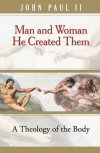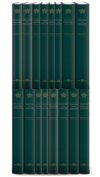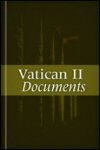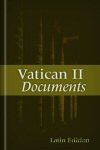John Paul II & John XXIII Canonization Bundle (92 vols.)
Digital Logos Edition
Overview
The John Paul II & John XXIII Canonization Bundle contains the most important writings of two pope-saints who had a tremendous impact on the twentieth century. John Paul II made major contributions to interfaith relations and was named one of the most influential leaders of our time, while John XXIII convened the Second Vatican Council—the assembly that changed the face of Catholic life and worship worldwide in the 1960s.
Delve into the encyclical letters, in which these popes share their thoughts with the world, applying Christian doctrine to the immediate circumstances of the day. Study the Apostolic Constitutions and Exhortations to deepen your understanding of papal teachings on Christian living and theology and their implications for the twentieth century and beyond. Review the documents of Vatican II—essential for understanding the last 50 years’ spirited, and sometimes contentious, conversations within Catholicism.
This bundle consists of 92 volumes and contains the 14 encyclicals of John Paul II, and all 8 by John XXIII—as well as their Apostolic Constitutions and Exhortations. It also includes Vatican II Documents, John Paul II’s groundbreaking Love and Responsibility, and his volume Man and Woman He Created Them: A Theology of the Body—which contains his insights on sex, the body, and the human person. Most volumes are presented in both English and Latin.
With Verbum Catholic Study Software, the writings of John Paul II and John XXIII are enhanced with cutting-edge research tools. Scripture citations appear on mouseover in your preferred English translation. Important terms link to dictionaries, encyclopedias, and a wealth of other resources in your digital library. Powerful topical searches help you find exactly what you’re looking for. Tablet and mobile apps let you take the discussion with you. With Verbum Catholic Study Software, the most efficient and comprehensive research tools are in one place, so you get the most out of your study.
Key Features
- Offers insight into contemporary Catholic living and theology
- Shares papal teaching on issues and doctrine relevant to the modern world
- Presents papal writings in English and Latin
Product Details
- Title: John Paul II & John XXIII Canonization Bundle
- Authors: John Paul II and John XXIII
- Publisher: Pauline Books & Media and Libreria Editrice Vaticana
- Volumes: 92
- Pages: 7,384
Individual Titles
- Love and Responsibility by John Paul II
- Man and Woman He Created Them: A Theology of the Body by John Paul II
- Apostolic Constitutions and Exhortations of John Paul II (44 vols.) by John Paul II
- Encyclicals of Pope John Paul II (28 vols.) by John Paul II
- Encyclicals of Pope John XXIII in English & Latin (16 vols.) by John XXIII
- Vatican II Documents
- Vatican II Documents (Latin Edition)

Originally published in Polish in 1960, Love and Responsibility is Karol Wojtyla’s groundbreaking book on human love which explains relationships between persons—especially concerning sexual ethics—in the context of human dignity.
This new translation of John Paul II’s classic work uses the 2001 version of the text published in Polish, which includes revisions to the original 1960 edition made by Blessed John Paul II himself. Also included is the first English publication of then-Cardinal Wojtyla’s article “On the Meaning of Spousal Love,” in which he continues his reflections on the topic. Translator Grzegorz Ignatik, a native Polish speaker, provides notes that define key terms, including Latin words and phrases. He also supplies comprehensive information on language nuances and major concepts.
This work is complementary to Blessed John Paul II’s Man and Woman He Created Them: A Theology of the Body and is a must-read for those interested in understanding his thought more fully. Whether you are a fan of John Paul II, a Theology of the Body enthusiast, a seminarian, a professor, a student, or a reader who enjoys philosophy and theology, you will find this translation to be rich in authenticity and accessibility.
While Love and Responsibility remains a challenging work on many levels, this masterful translation will greatly assist you in understanding Wojtyla’s insightful reflections. It will also be a rewarding experience as you are shown how to love responsibly—in your relationships with spouses, family members, friends, companions, and neighbors—attaining love that is truer and more fulfilling.
This new translation of Love and Responsibility, based on Pope John Paul II’s revisions and with the addition of an important later article, is a major achievement. The translator is to be congratulated for his clear and faithful text as well as for his wonderfully thoughtful notes.
—David L. Schindler, Gagnon Professor of Fundamental Theology, Pontifical John Paul II Institute for Studies on Marriage and Family, The Catholic University of America
Grzegorz Ignatik, a native Polish speaker, teaches at the Pontifical College Josephinum in Columbus, Ohio, and is a PhD candidate in theology at the John Paul II Institute for Studies on Marriage and Family, Washington, DC. He holds a Sacred Theology Licentiate from the International Theological Institute, Austria.

Man and Woman He Created Them is John Paul II’s seminal work on the bodily dimension of human identity, sexuality, marriage, and celibacy. First written while he was Archbishop of Kraków, then later revised and delivered as a series of catecheses after he became pope, this work was called “theology of the body” by John Paul II himself. In his momentous teaching, John Paul II has left us the core of his great vision, focused on the mystery of love extending from the Trinity, through Christ’s spousal relation with the Church, to the concrete bodies of men and women. With keen insight into the modern “split” between the person and the body, he presents an integral image of the human person, one rooted in Sacred Scripture and the Church’s living tradition.
This translation of the pope’s work, prepared by biblical scholar Michael Waldstein, allows us to enter into John Paul II’s profound vision. With the inclusion of material previously unpublished in English, and the rediscovery of John Paul II’s own headings for the work, the reader is able to follow the pope’s thought with clarity and confidence.
Complete with a comprehensive introduction, translator’s footnotes, and detailed index, this edition has been crafted with the kind of insight that builds more than 20 years of scholarship on John Paul II’s great gift to the Church.
Michael Waldstein is going to put many people in his debt with this superb piece of work, a labor of love shaped by an acute intelligence. The illuminating translation, the brilliant introduction, and the carefully crafted index will make this the standard English-language edition throughout the twenty-first century for scholars, for pastors, for students, and indeed for anyone interested in exploring John Paul II’s most creative contribution to human self-understanding.
—George Weigel, senior fellow, Ethics and Public Policy Center
Now, for the first time in English, we have a professional, critical translation of these homilies. John Paul II’s “Theology of the Body” has been highly lauded as one of the greatest (if not the greatest) exposition on Christians sexual ethics, with a focus on the human person and the gift of the body. It is perhaps [John Paul II]’s greatest gift to the Church, especially as it was/is critical in the renewal of the Church after the devastating effects of the sexual revolution of the sixties and the irresponsible and childish rebellion of certain Catholic academics.
—Kevin Davis, ThM, University of Aberdeen
Michael Waldstein is chancellor and Francis of Assisi Professor of New Testament at the International Theological Institute, Austria. Together with his wife, Susie, he is a member of the Pontifical Council for the Family. Waldstein earned his BA at Thomas Aquinas College, California, a PhD in philosophy at the University of Dallas, an SSL in Scripture from the Biblicum in Rome, and a ThD in New Testament and Christian origins at Harvard Divinity School. Before his present appointment, he was associate professor of New Testament at the University of Notre Dame. He and his wife have eight children.

Apostolic Constitutions and Exhortations of John Paul II
- Author: John Paul II
- Publisher: Libreria Editrice Vaticana
- Volumes: 44
The Apostolic Constitutions and Exhortations of John Paul II (44 vols.) contains the most important writings of John Paul II, next to his encyclical letters. The papal office holds the highest teaching authority in the Catholic Church, and the popes realize this office through a number of channels and through the promulgation of a variety of documents. The most famous of these are the papal encyclical letters, which express the pope’s mind normally on matters of faith and morals. Apostolic exhortations often concern similar topics but do not define doctrine and are normally directed at encouraging certain groups within the Church to certain activities. In recent decades apostolic exhortations have most often been issued at the conclusion of synods of bishops and have served as the popes’ summations and interpretations of those synods’ conclusions. Apostolic constitutions, however, are more juridical in nature. They are formal papal decrees and carry the highest authority. Apostolic constitutions can deal with the structure of the Church, but also the liturgy, pastoral, or dogmatic concerns. Together with encyclicals, apostolic exhortations and constitutions are the most important documents produced by the Holy See, touching all matters of ecclesiastical government and doctrine.
Contents
- Apostolic Constitutions
- Ecclesia in Urbe (Latin)
- Universi Dominici Gregis (English)
- Universi Dominici Gregis (Latin)
- Fidei Depositum (English)
- Fidei Depositum (Latin)
- Ex Corde Ecclesiae (English)
- Ex Corde Ecclesiae (Latin)
- Pastor Bonus (English)
- Pastor Bonus (Latin)
- Spirituali militum curae (Latin)
- Divinus Perfectionis Magister (English)
- Divinus Perfectionis Magister (Latin)
- Sacrae Disciplinae Leges (English)
- Sacrae Disciplinae Leges (Latin)
- Magnum Matrimonii Sacramentum (Latin)
- Sapientia Christiana (English)
- Sapientia Christiana (Latin)
- Scripturarum Thesaurus (English)
- Scripturarum Thesaurus (Latin)
- Apostolic Exhortations
- Pastores gregis (English)
- Pastores gregis (Latin)
- Ecclesia in Europa (English)
- Ecclesia in Oceania (English)
- Ecclesia in Asia (English)
- Ecclesia in America (English)
- A New Hope for Lebanon (French)
- Vita Consecrata (English)
- Vita Consecrata (Latin)
- Ecclesia in Africa (English)
- Ecclesia in Africa (Latin)
- Pastores Dabo Vobis (English)
- Pastores Dabo Vobis (Latin)
- Redemptoris Custos (English)
- Redemptoris Custos (Latin)
- Christifideles Laici (English)
- Christifideles Laici (Latin)
- Reconciliatio et Paenitentia (English)
- Reconciliatio et Paenitentia (Latin)
- Redemptionis Donum (English)
- Redemptionis Donum (Latin)
- Familiaris Consortio (English)
- Familiaris Consortio (Latin)
- Catechesi Tradendae (English)
- Catechesi Tradendae (Latin)

Encyclicals of Pope John Paul II
- Author: John Paul II
- Publisher: Libreria Editrice Vaticana
- Volumes: 28
For nearly two thousand years, popes have communicated to the world primarily through their letters. In the premodern world, the papal chancery turned out tens of thousands of letters a year. On occasion, a letter dealt with broad concerns and was intended to circulate through the churches of a given region. Such letters became known as encyclicals. In the modern period, papal encyclicals have become the primary medium through which the papacy exercises its teaching office. Through them, the popes address theological topics of especially timely concern, applying Christian doctrine to the immediate circumstances of the day.
Pope John Paul II wrote 14 encyclical letters. In them, the pontiff developed his characteristic personalism—a focus on the dignity of each human person as an end in and of themselves. Through this lens, John Paul II analyzed the problems faced by the contemporary world and provided penetrating insight into their solutions—solutions that focused not on political or economic policy, but on conversion. The topics of his encyclicals varied from the relationship between faith and reason, to guidelines for a just economic order, to contemporary ecumenism.
Contents
- Redemptor Hominis
- Redemptor Hominis (Latin)
- Dives in Misericordia
- Dives in Misericordia (Latin)
- Laborem Exercens
- Laborem Exercens (Latin)
- Slavorum Apostoli
- Slavorum Apostoli (Latin)
- Dominum et Vivificantem
- Dominum et Vivificantem (Latin)
- Redemptoris Mater
- Redemptoris Mater (Latin)
- Sollicitudo Rei Socialis
- Sollicitudo Rei Socialis (Latin)
- Redemptoris Missio
- Redemptoris Missio (Latin)
- Centesimus Annus
- Centesimus Annus (Latin)
- Veritatis Splendor
- Veritatis Splendor (Latin)
- Evangelium Vitae
- Evangelium Vitae (Latin)
- Ut Unum Sint
- Ut Unum Sint (Latin)
- Fides et Ratio
- Fides et Ratio (Latin)
- Ecclesia de Eucharistia
- Ecclesia de Eucharistia (Latin)

The Encyclicals of Pope John XXIII in English & Latin
- Author: Pope John XXIII
- Publisher: Libreria Editrice Vaticana
- Publication Date: 1963
- Volumes: 16
For nearly two thousand years, popes have communicated to the world primarily through their letters. In the premodern world, the papal chancery turned out tens of thousands of letters a year. On occasion, a letter dealt with broad concerns and was intended to circulate through the churches of a given region. Such letters became known as encyclicals. In the modern period, papal encyclicals have become the primary medium through which the papacy exercises its teaching office. Through them, the popes address theological topics of especially timely concern, applying Christian doctrine to the immediate circumstances of the day.
These encyclicals are a testament to their times. Written during the turbulent 1950s and 1960s, they demonstrate Blessed Pope John XXIII’s commitment to bringing the Gospel to humankind. In Pacem in Terris (Peace on Earth), the first papal encyclical ever addressed not just to the Catholic faithful but “all Men of Good Will,” Pope John XXIII outlines the requirements for basic human rights, saying “Man has the right to live. He has the right to bodily integrity and to the means necessary for the proper development of life. . .” He continues by listing economic, political, immigration, vocational, and religious freedoms that must exist where they are able (e.g. first-world countries). This encyclical, perhaps more than any other pre-Vatican II papal writing, has begun the foundation for the modern Catholic teaching on human rights, freedoms, and responsibilities.
Contents
- Pacem in Terris
- Paenitentiam Agere
- Aeterna Dei Sapientia
- Mater et Magistra
- Princeps Pastorum
- Grata Recordatio
- Sacerdotii Nostri Primordia
- Ad Petri Cathedram
- Pacem in Terris (Latin)
- Paenitentiam Agere (Latin)
- Aeterna Dei Sapientia (Latin)
- Mater et Magistra (Latin)
- Princeps Pastorum (Latin)
- Grata Recordatio (Latin)
- Sacerdotii Nostri Primordia (Latin)
- Ad Petri Cathedram (Latin)

Vatican II Documents
- Publisher: Libreria Editrice Vaticana
- Publication Date: 2011
- Pages: 1,015
Nearly a century after the First Vatican Council, the Second Vatican Council, commonly known as Vatican II, was held between 1962–1965. This assembly, invoked by Pope John XXIII, met to discuss matters of faith and Church discipline. Over 2,000 Patriarchs, Cardinals, residing Bishops, Abbots, male heads of religious orders, and other nominated persons participated each autumn in the four year event. From this assembly four Constitutions, three Declarations, and nine Decrees were produced, creating major changes for Catholic life and worship worldwide. The Vatican II Documents are essential for understanding the spirited, and sometimes contentious, conversations within Catholicism for the last fifty years.
The Logos Bible Software edition of the Vatican II Documents is the English translation published by Libreria Editrice Vaticana. With the extensively linked Vatican II Documents, resources such as the Early Church Fathers Special Catholic Edition, the Summa Theologica of St. Thomas Aquinas, and the Catholic Theology and Dogma Collection become even more powerful as you explore them together.
Contents
- Constitutions
- Dei Verbum—Dogmatic Constitution on Divine Revelation
- Lumen Gentium—Dogmatic Constitution on the Church
- Sacrosanctum Concilium—Constitution on Sacred Liturgy
- Gaudium et Spes—Pastoral Constitution on the Church in the Modern World
- Declarations
- Gravissimum Educationis—Declaration on Christian Education
- Nostra Aetate—Declaration on the Relation of the Church to Non-Christian Religions
- Dignitatis Humanae—Declaration on Religious Freedom
- Decrees
- Ad Gentes—Decree on the Mission Activity of the Church
- Presbyterorum Ordinis—Decree on the Ministry and Life of Priests
- Apostolicam Actuositatem—Decree on the Apostolate of the Laity
- Optatam Totius—Decree on Priestly Training
- Perfectae Caritatis—Decree on the Adaptation and Renewal of Religious Life
- Christus Dominus—Decree Concerning the Pastoral Office of Bishops in the Church
- Unitatis Redintegratio—Decree on Ecumenism
- Orientalium Ecclesiarum—Decree on the Catholic Churches of the Eastern Rite
- Inter Mirifica—Decree on the Media of Social Communications

Vatican II Documents (Latin Edition)
- Publisher: Libreria Editrice Vaticana
- Publication Date: 2013
- Pages: 533
Nearly a century after the First Vatican Council, the Second Vatican Council—commonly known as Vatican II—was held between 1962 and 1965. This assembly, invoked by Pope John XXIII, met to discuss matters of faith and Church discipline. Over 2,000 patriarchs, cardinals, residing bishops, abbots, male heads of religious orders, and other nominated persons participated each autumn in the four-year event. From this assembly, four constitutions, three declarations, and nine Decrees were produced, creating major changes for Catholic life and worship worldwide. The Vatican II Documents are essential for understanding the last 50 years’ spirited, and sometimes contentious, conversations within Catholicism.
The Latin Edition of the Vatican II Documents is published by Libreria Editrice Vaticana. With the extensively linked Vatican II Documents, resources such as the Early Church Fathers Special Catholic Edition, the Summa Theologica of St. Thomas Aquinas, and the Catholic Theology and Dogma Collection become even more powerful as you explore them together.
Contents
- Constitutions
- Dei Verbum—Dogmatic Constitution on Divine Revelation
- Lumen Gentium—Dogmatic Constitution on the Church
- Sacrosanctum Concilium—Constitution on Sacred Liturgy
- Gaudium et Spes—Pastoral Constitution on the Church in the Modern World
- Declarations
- Gravissimum Educationis—Declaration on Christian Education
- Nostra Aetate—Declaration on the Relation of the Church to Non-Christian Religions
- Dignitatis Humanae—Declaration on Religious Freedom
- Decrees
- Ad Gentes—Decree on the Mission Activity of the Church
- Presbyterorum Ordinis—Decree on the Ministry and Life of Priests
- Apostolicam Actuositatem—Decree on the Apostolate of the Laity
- Optatam Totius—Decree on Priestly Training
- Perfectae Caritatis—Decree on the Adaptation and Renewal of Religious Life
- Christus Dominus—Decree Concerning the Pastoral Office of Bishops in the Church
- Unitatis Redintegratio—Decree on Ecumenism
- Orientalium Ecclesiarum—Decree on the Catholic Churches of the Eastern Rite
- Inter Mirifica—Decree on the Media of Social Communications
This title is included in the following collections
You can save when you purchase this product as part of a collection.
Verbum 8 Platinum Legacy Libra...
$1,499.99$1,499.99Verbum 7 Platinum Legacy Libra...
$1,499.99$1,499.99Verbum 9 Platinum Legacy Libra...
$1,499.99$1,499.99Verbum 8 Diamond Legacy Librar...
$2,999.99$2,999.99
- $2,999.99
- $2,999.99
- $4,749.99
- $4,749.99
- $4,749.99
- $7,749.99
- $7,749.99
- $21,749.99
- $24,999.99
About the Authors
John Paul II (Karol Józef Wojtyla) (1920–2005) served as Pope for 26 years (1978–2005). In 1942, he felt called to the priesthood and began courses in the clandestine seminary of Krakow. Wojtyla was ordained to the priesthood on November 1, 1946, and shortly after, was sent to Rome where he worked under Garrigou-Lagrange. In 1958 he was appointed as the titular bishop of Ombi and auxiliary of Krakow and in 1964 was appointed as the archbishop or Krakow. Three years later, he was elevated to Cardinal.
In 1978, Karol Wojtyla was elected Pope, where he took on the name John Paul II. As Pope, he was instrumental in ending communism in his native Poland. He significantly improved the Catholic Church’s relationship with Judaism, Islam, the Eastern Orthodox Church, and the Anglican Communion. He has been acclaimed as one of the most influential leaders of the twentieth century.
John XXIII (Angelo Giuseppe Roncalli) (1881–1963) led the Catholic Church and was head of state for the Vatican City from 1958 until his death.
Ordained a priest in 1904, Roncalli completed his ThD the same year in Rome. He was a lecturer in the seminary of Bergamo, Italy, from 1914 until he was drafted into the Royal Italian Army during World War I, where he served as a sergeant in the medical corps and as a chaplain. When he left the army in 1919, he was named spiritual director of the seminary at Bergamo.
In 1944, Pope Pius XII named Roncalli the Apostolic Nuncio to France, where Roncalli worked to negotiate the retirement of bishops who collaborated with the German occupying power during World War II. He worked tirelessly during World War II to assist in the transportation of Jews away from Germany, Bulgaria, Romania, and Italy to places of safer refuge.
In 1953, he was appointed Patriarch of Venice and was promoted to Cardinal by Pope Pius XII. After Pope Pius XII’s death five years later, Roncalli was elected pope. During his papacy, he worked to purify the Church of anti-semitism, called the Second Vatican Council, offered to mediate between President John F. Kennedy and Nikita Khruschev during the Cuban Missile Crisis, and frequently made pastoral visits to various parish hospitals, prisons, and churches in Rome.
He passed away on June 3rd, 1963. His last words, spoken three days prior, began, “I had the great grace to be born into a Christian family, modest and poor, but with the fear of the Lord. My time on earth is drawing to a close. But Christ lives on and continues his work in the Church. Souls, souls, Ut omnes unum sint.”
Reviews
2 ratings

Anthony
6/14/2016

Deacon Tim Johnson
9/29/2014